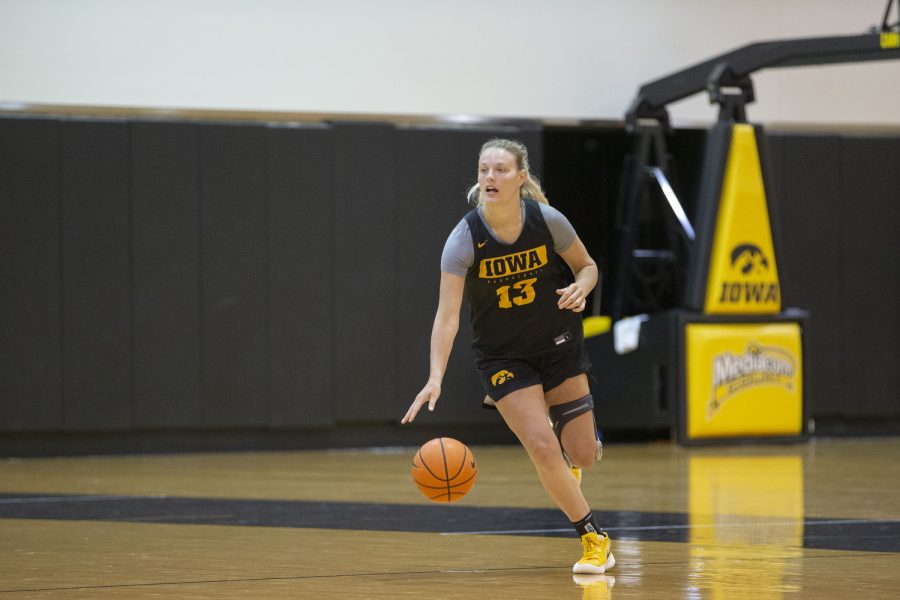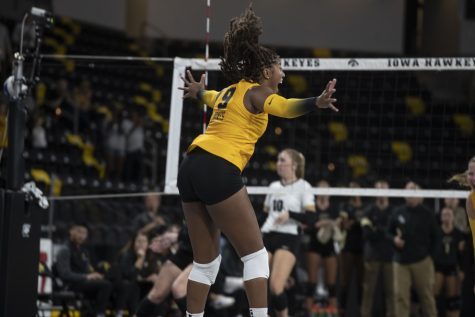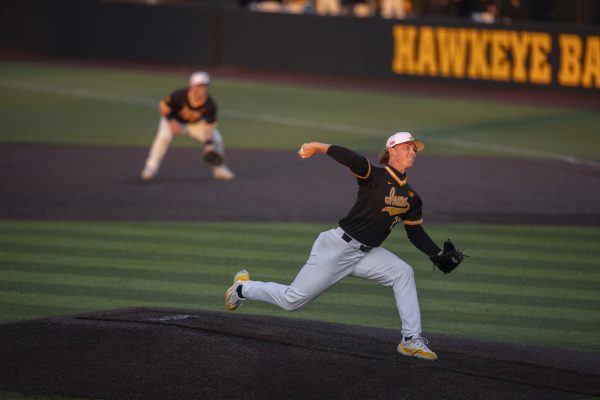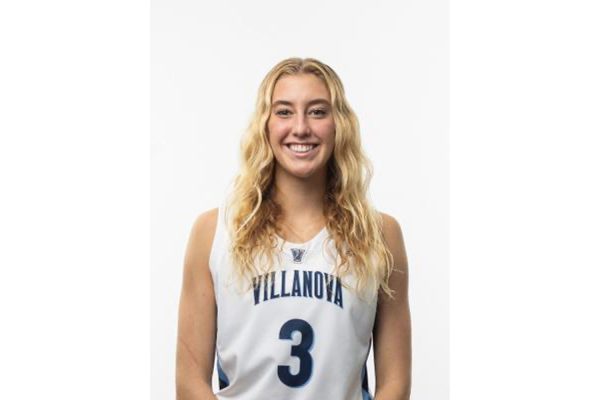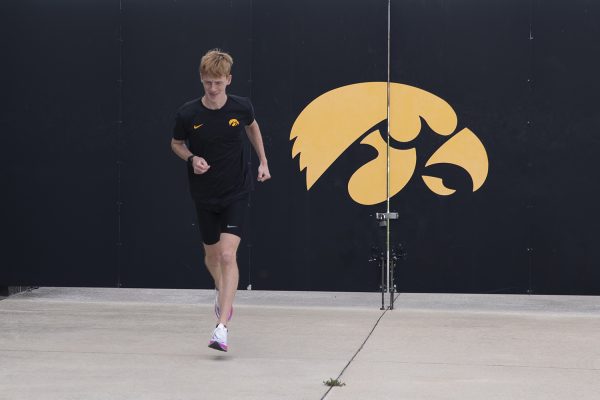Inside student-athletes’ yearlong recovery after ACL reconstruction
ACL tears, reconstruction, and yearlong rehabilitation can take a large physical and emotional toll on student-athletes.
Iowa forward Shateah Wetering dribbles the ball during an Iowa women’s basketball practice at Carver-Hawkeye Arena in Iowa City on Friday, July 29, 2022.
December 6, 2022
Three Iowa women’s basketball players have torn their ACLs in the past two years.
Forward Shateah Wetering and center Sharon Goodman had to sit out in 2021-22, and guard Kylie Feuerbach tore her ACL ahead of the 2022-23 season.
Sitting out of an entire season can be isolating — especially in the case of Wetering and Goodman, both of whom missed the Hawkeyes’ 2022 Big Ten Conference title run.
Michael Berrebi, a University of Iowa Sports Medicine sport and performance psychology consultant, mainly works with high schoolers and middle schoolers around the Iowa City community. When athletes have a severe injury, he said, many players can feel isolated from their teams.
“For some players, it’s an ‘out of sight, out of mind’ thing because you’re not able to contribute,” Berrebi said. “They may be at practices, but they’re off to the side. Or they’re just not even at practice and they’re rehabbing. It can be very isolating, and it can be very frustrating. I just help them deal with some of those emotions and feelings of being the forgotten one.”
Berrebi recommends staying involved as much as possible, including attending practices, going to meetings, and being a vocal supporter at games.
Iowa women’s basketball’s athletic trainer Jennie Sertterh makes sure rehabilitating athletes stay involved with their team. While they may not be able to practice on the court, she brings rehab out into the same area.
“Rehab-wise, I do try as much as possible to keep them with the team, even if it’s doing some stuff maybe on the side of the court,” Sertterh said. “Before they’re lifting, [strength coach Lindsay Alexander] might do a med ball circuit with them that they can, but she’ll do it on the court, so we can keep them with the team as much as we can, so they don’t feel that isolation.”
Goodman and Wetering had each other to work through surgery and rehab ahead of the 2022-23 season. Now that Feuerbach is going through the same thing, Goodman said they’re trying to help her as much as possible.
“There’s ups and downs, and that’s what they tell you right away. But until you’re in it, you don’t really realize that,” Goodman said. “So, there’s definitely ups and downs, but I had my teammate Shateah with me the whole time. We both had ACL injuries. So, I think that was a big support for me, and we’ve definitely grown closer through it, and we’ve learned a lot.”
Female athletes are more likely to undergo the isolating experience of rehabilitation. According to Yale Medicine, female athletes are 2-to-8 times more likely to tear their ACLs than males, depending on the sports. And women’s basketball is one of the sports most prone to ACL tears.
“The anatomy of a woman compared to men is a little different,” Brian Wolf, an orthopedic surgeon with UI Sports Medicine, said.“The shape of their pelvis, the angle of their knee — those things have slight differences. There also tends to be a little bit of a difference in the relative ratio when we think of the strength of quads and hamstrings, so there are some muscular differences.”
Wolf, who is also the director of UI Sports Medicine, said basketball, soccer, and football are the riskiest sports for ACL tears. Those sports, he said, usually require a sudden change of direction or quick stops. Wolf works with the football, women’s basketball, baseball, and swimming teams, and said an ACL tear is typically a non-contact injury.
“It’s not usually when they get hit, it’s usually when they are trying to change direction or speeds,” Wolf said. “And if they get their knee caught at the right angle, they could’ve done it a thousand times, but occasionally bad things happen.”
UI Sports Medicine specifically works with female athletes and athletic trainers, Wolf said, to make sure there is a prevention program in place for severe injuries like ACL tears.
Wolf said the strength and control in how athletes land is a specific risk factor, so he works with athletic trainers to emphasize how the knee should function like a spring and bend forward instead of inward. Strength imbalances between the legs, quads, or hamstrings can also be a risk, he said.
Mitigation programs are usually implemented within the strength training room, and head women’s basketball coach Lisa Bluder said she hasn’t changed her practices.
“We’ve always done things to try to prevent ACL tears, whether it’s in our strength training room, in strengthening the quads and making sure that they have equal strength between the hamstrings and the quads, also flexibility,” Bluder said. “Are we doing anything different? No. But we have always, always worked on trying to maintain the strength and flexibility of our athletes so that they don’t have these kinds of injuries.”
When a basketball player does have an ACL tear, however, they have a long road back to the court.
ACL surgery includes borrowing a piece of tissue from around the knee, like the patellar, quadriceps, or hamstring tendon, Wolf said. Then, surgeons make the tendon into a graft and insert it into the place of the torn ACL.
The surgery only takes two and a half hours, but recovery is more arduous. Over the course of multiple months, Wolf said, the body grows into the graft and makes a new ACL.
“We usually tell [athletes] to expect it’ll take about nine months before they’re back on the field,” Wolf said. “That’s based on the fact that it usually takes that long for them to get their strength back, get themselves back to being balanced, to have normal strength to jump and land. And when we test them, for them to look appropriate.”
The first three months of recovery are focused on reducing swelling along with increasing range of motion, Wolf said. In the four-month range, Wolf hopes patients can start jogging, but that is dictated on their strength on their time.
Around the six-month mark, athletes aim to start changing direction and cutting, along with other forms of risky movement that might’ve led to the ACL tear in the first place. The last couple months are primarily focused on becoming an athlete again — pivoting, jumping, and landing.
After athletes are cleared to play, they’re gradually reintroduced to practice, Wolf said. The recovery time is the same between male and female athletes across all sports, he added.
Sertterh doesn’t like to focus on timelines in rehabilitation. ACL tears can have different types of severity, so some rehabs can take longer than others.
“I don’t like to generally say, ‘At six weeks, you’re going to be able to do this, at 12 weeks you can do this,’ because everyone is different in how their body is going to react with the surgery,” Sertterh said. “There are definitely some strength-based things that we can look at to try to progress to the next phase.”
After a male or female athlete has torn their ACL, Wolf said, the risk of reinjury is the same — about 10 percent in the next six to 10 years. Athletes also have a 10 percent chance of hurting their other knee after reconstruction, Wolf said. Overall, a young player who continues to play a risky sport has a 1-in-5 chance of tearing an ACL again.
Because of this, Wolf said some athletes he treats decide not to return to their sport.
“I think fear of reinjury is a real thing,” Wolf said. “It happens more often than people realize. When we looked at several hundred ACLs in football and soccer players, with our research that we’ve done, we found about 30 percent of folks going back to soccer or to football did not return because … the risk of reinjury was, to them, a big part of why they didn’t return.”
Berrebi said about one-third of his meetings are with athletes who have gone through a major injury. He said athletes have a lot of concerns with reinjury, so he tries to help them accept that it is a normal part of having a severe injury.
He also recommends athletes check in with coaches and set realistic, attainable goals. He sets rehab calendars with his athletes that give them positive affirmations, including “I am getting stronger today” and “I am a good teammate.”
“I try to take a mindfulness perspective,” Berrebi said. “… When you notice you’re worrying about reinjury, focus on what’s more important in that moment — your positioning, your responsibility out there, your effort — that kind of thing.”



